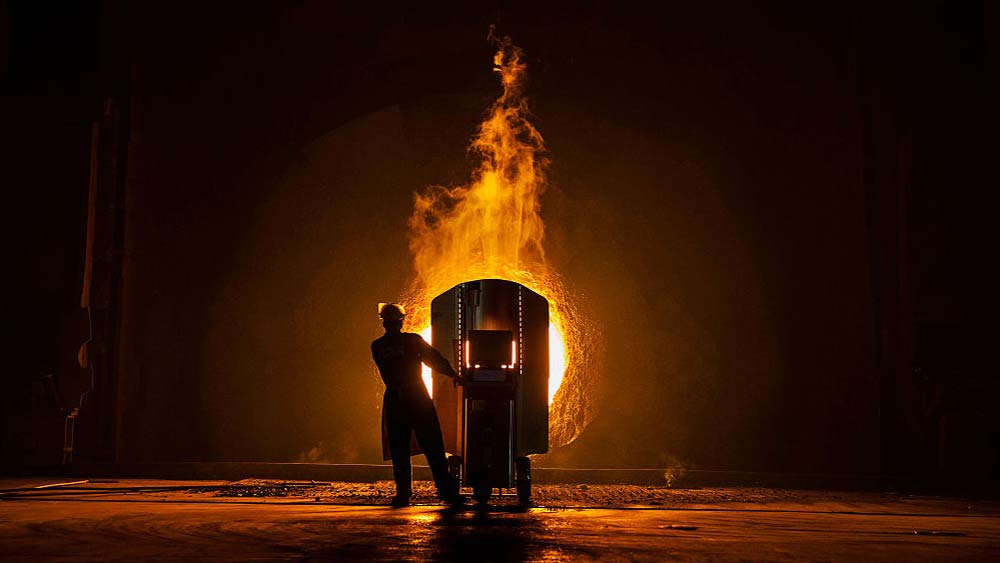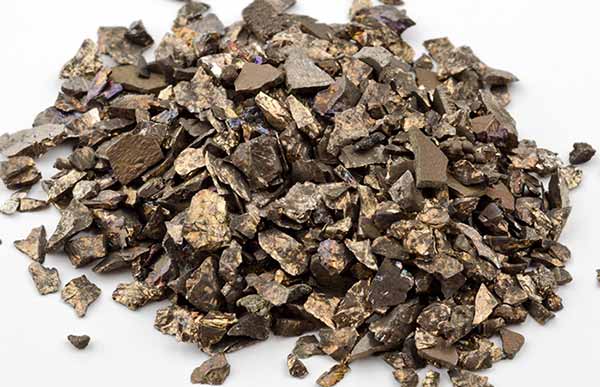Aussie manganese is in demand from steel and battery makers – and these stocks could benefit

Pic: Getty
Australia is attracting increasing interest from global steel and battery makers for its manganese — and a handful of ASX-listed players could benefit.
Manganese is the fourth-most-traded metal in the world. Only aluminium, iron ore and copper are more widely used.
About 90 per cent of manganese goes into steel-making, but it’s increasingly used in next-generation battery and power storage applications.
Over the past year, five of the ASX’s eight manganese stocks have made gains of between 15 per cent and 535 per cent — led by OM Holdings (ASX:OMH). Though in the past six months just two are in the positive — with Jupiter Mines (ASX:JMS) the biggest gainer (332 per cent).
>> Scroll down for a list of ASX stocks with manganese exposure
South Africa is the biggest producer of manganese, but it faces logistical challenges.
“We’ve got a logistical and location advantage in Australia,” Neil Marston, the boss of junior explorer Bryah Resources (ASX:BYH), told Stockhead on the sidelines of the Diggers & Dealers Mining Forum in Kalgoorlie last week.
“Certainly some of the consumers of manganese that we’ve spoken to are very keen to be sourcing manganese from jurisdictions where it’s reliable.
“Australia is seen as a very attractive jurisdiction as far as quality of supply, certainty of supply, and sovereign risk is low as we know and that’s a big plus for Australia and for us.”
Earlier this year Bryah secured a one-year exclusive option to buy a mining lease that covers the Horseshoe South mine in Western Australia that was once the biggest producer of manganese in the Bryah Basin.
High grade manganese of up to 48 per cent has been uncovered in rock chip sampling at the Horseshoe South mine.
There is also 215,000 cubic metres of manganese stockpiles left on site that Bryah could capitalise on quite quickly.
There are only about seven other ASX-listed companies that have exposure to manganese (see table below).
| ASX code | Company | 12-month change | 6-month change | Price Aug 13 (intraday) | Market Cap |
|---|---|---|---|---|---|
| OMH | OM HLDGS | 5.35 | 0.0452674897119 | 1.27 | 952.8M |
| JMS | JUPITER MINES | 3.32098765432 | 3.32098765432 | 0.35 | 685.6M |
| E25 | ELEMENT 25 | 0.21875 | -0.152173913043 | 0.195 | 16.7M |
| PMY | PACIFICO MINERAL | 0.166666666667 | -0.125 | 0.007 | 7.1M |
| S32 | SOUTH32 | 0.15522875817 | -0.0445945945946 | 3.535 | 18.6B |
| SPI | SPITFIRE MATERIALS | -0.35652173913 | -0.327272727273 | 0.074 | 39.8M |
| PM1 | PURE MINERALS | -0.391304347826 | -0.222222222222 | 0.014 | 4.4M |
| BYH | BRYAH RESOURCES (listed Oct 2017) | -0.475 | -0.275862068966 | 0.105 | 6.5M |
The $19 billion South32 (ASX:S32) is currently mining manganese on the island of Groote Eylandt in the Northern Territory.
The open pit mine, which is 60 per cent owned by South32 and 40 per cent owned by Anglo American, is currently the largest and lowest-cost manganese ore producer in the world.
OM Holdings, meanwhile, is mining manganese from its Bootu Creek mine located 110km north of Tennant Creek in the Northern Territory.
While Jupiter Mines is also a manganese miner, its Tshipi mine is in South Africa.
The company, which made its debut on the ASX in April following a $240 million raising, shipped more manganese than it expected in the first quarter of its 2019 financial year (March to May) and has promised shareholders a big chunk of cash in the first half – most likely in the form of a dividend.
On the exploration front, besides Bryah, there is Element 25 (ASX:E25), Pure Minerals (ASX:PM1), Pacifico Minerals (ASX:PMY) and Spitfire Materials (ASX:SPI).
Element 25, Pure Minerals and Spitfire are exploring for manganese in Western Australia, while Pacifico has a cobalt, copper and manganese project in South Australia.
Highly sought-after commodity
Manganese is irreplaceable in steel-making. It helps process iron ore into steel, reduce brittleness and impart strength.
China is a major source of demand for manganese in steel-making.
In China in the first half of 2018, steel production increased 6 per cent year-over-year – representing about 450 million tonnes of steel.
Railway construction is now becoming a significant factor in steel demand.
The expectation is that this year railways in China alone will consume 32 per cent of the country’s total steel demand – around $US26 billion ($35.7 billion) worth of steel.

And that doesn’t take into account the railways China is building outside of the country.
“The demand for steel, in this part of the world, is growing strongly as China’s Belt and Road policies continue to result in huge infrastructure projects in the Asian Pacific region,” Mr Marston said.
Tesla turning to manganese
Elsewhere, manganese is becoming a more important element in the production of batteries, particularly for use in electric cars.
Tesla currently uses nickel-cobalt-aluminium (NCA) batteries for the EVs at its Gigafactory in Nevada, but new batteries made from nickel, manganese and cobalt (NMC) have lower raw material costs, a reduced charging time and a longer lifespan.
Manganese sells for less than $US1 a pound versus around $US14 a pound for cobalt, which for Tesla accounts for half the price of the vehicle.
Tesla boss Elon Musk and Panasonic – which supplies the batteries for Tesla vehicles – have both been very public about their push to eliminate cobalt from their products.
- Subscribe to our daily newsletter
- Bookmark this link for small cap news
- Join our small cap Facebook group
- Follow us on Facebook or Twitter
There is speculation Tesla may be switching to manganese-based batteries after it inked a five-year partnership with a prominent NMC battery researcher who has been tasked with reducing battery costs for the company.
Other large purchasers of new battery technology are also shifting to NMC batteries, including 3M, BMW, General Electric Company and Duracell.
“We’re only just starting to see the tip of the iceberg really around that,” Mr Marston said.
“As the world switches from internal combustion to electric vehicles and these mobile battery applications, manganese is very much seeing demand on that side grow.”
UNLOCK INSIGHTS
Discover the untold stories of emerging ASX stocks.
Daily news and expert analysis, it's free to subscribe.
By proceeding, you confirm you understand that we handle personal information in accordance with our Privacy Policy.








